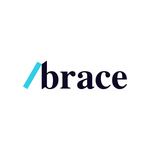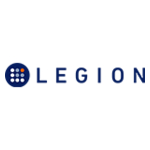Brace Announces New KPIs for Measuring Mortgage Servicer Impact
New success metrics and benchmarks for Servicers in the digital age include proactive efficiency, in-house compliance and consumer empowerment targets.
LOS ANGELES–(BUSINESS WIRE)–Brace, the mortgage servicing infrastructure fintech, shares insights on the power of harnessing the most effective targets in the new, digital age of mortgage. Current mortgage servicing Key Performance Indicators (KPIs) tend to spotlight call center metrics, as found in Brace’s quarterly Mortgage Servicing Pulse. However, traditional KPIs such as calls per agent, contact rate, wait times, and average talk time provide little to no information as to whether a portfolio is on its way to re-performance. Instead, Brace finds digital-first Servicers can right-side homeowners before they slip into default by establishing operations that focus on options to speed up collaboration and communication.
Brace’s report guides Servicers on which indicators have the greatest potential to influence business and industry outcomes. Metrics such as proactive, real-time monitoring of payment slippage and live dashboarding on 30-60-90 delinquency rates strongly affect revenue goals. Tracking the efficiency of team member performance by task against Real Estate Settlement Procedures Act (RESPA) timelines reduces costs in compliance oversight and yields a positive impact on Servicer margins. Targets on consumer access points and early resolution solutions have a direct tie to homeowner empowerment – important for amenability to federal law specifying the right to obtain timely responses.
“Finding proactive ways to keep loans performing and taking preventative measures to avoid delinquency is a sure way to achieve recurring revenue benchmarks,” said Jose Morin, Vice President of Servicing at Brace. “Framing organizational goals around seamless engagement and retention, for both homeowners and mortgage servicing professionals alike, increases the likelihood of establishing early quality right party contact (QRPC), which in turn, improves gross profit that can be delivered to the business while ensuring homeowners get the service they are legally entitled to.”
Benefits to taking a digital by default approach include:
- Becoming more effective in decreasing the overall number of delinquencies, or Non-Performing Loans (NPLs)
- Higher efficiency in loans worked or Loans per Employee (LPE)
- Improvements in meeting the needs of in-house compliance, such as average response time to servicing guideline changes and QC audits
- Increases in consumer preference, accessibility and satisfaction
“Having a connected infrastructure in place sets the stage for proactive outreach and encourages higher quality output from servicing professionals. When mortgage servicing systems aren’t designed with this in mind there are consequences that ultimately drive-up costs,” said Robert Brueckmann, Vice President of Engineering at Brace. “Servicers will want to have the appropriate underlying technology in place to support the ability to get a well-rounded view of your progress.”
To learn more on how to select and implement the right KPIs for your Servicing division and to read the full ebook, please visit brace.ai.
About Brace
Brace evolves mortgage servicing through a connected infrastructure for every stakeholder—consumers, servicers, lenders, and investors—to intuitively maximize assets and unlock the financial performance for every home. Brace’s flagship product, the Default Management Platform, supports the end-to-end process for the decisioning of a loss mitigation application and digital mortgage servicing experience in a secure, compliant and consumer-enabled experience. Brace’s customers include a number of the top ten largest U.S. mortgage servicers. Visit brace.ai to learn more.
Contacts
Media Relations
Marlene Wilden
Archie Group for Brace
(475) 328-9456
[email protected]





































